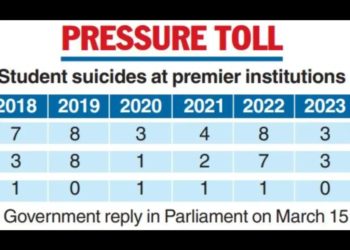This week the Transgender Persons (Protection of Rights) Bill is up for vote in the Lok Sabha. The Bill has had a comparatively short but turbulent history. On the back of the National Legal Services Authority v UoI (NALSA) judgement and an Expert Committee Report by the Ministry of Social Justice and Empowerment (here) the Bill was first introduced and passed as a Private Member Bill by the Rajya Sabha in 2015. A year later however, the Ministry introduced a modified version of the Rajya Sabha Bill and referred it to committee. The Standing Committee (whose report can be found here) lambasted the Bill on several points that we will discuss here and on subsequent posts. Despite the Standing Committee’s report, the provisions of the bill have not been modified and continue to raise some troubling constitutional issues.
Beginning with the distinctions of ‘sex’ and ‘gender’, as well as ‘gender identity’ and ‘gender expression’, this post examines the interpretation of Articles 19 and 21 in NALSA. While there are a host of practical and legal ramifications of introducing such legislation, this post focuses on the constitutional issues raised by the definition of “transgender” in the current Bill and the ‘screening process’ that individuals have to undergo to secure legal recognition of their gender identity.
The constitutional framework
Before looking at the multiple definitions of “transgender” that have been used by the bills in parliament, its crucial to understand the constitutional framework created by NALSA and Article 19 and 21. (There are other judgements before and after that contribute to this framework, but the relevant principles are discussed contextually in NALSA.) Firstly, the Court distinguishes between ‘sex’ and ‘gender’. The former is determined by biological characteristics such as chromosomes and internal and external sex organs, and is assigned to individuals at birth while the latter is constituted by an individual’s own experience, developed through innate belief, upbringing, society and culture. In the case of a transgender person there is a conflict between their “gender identity” assigned to them at birth, and the one they develop through the course of their life. Secondly, while ‘gender identity’ refers to an individual’s internal experience of gender, ‘gender expression’ refers to their outward expression, as perceived by society.
It is the right of transgender persons to choose their gender identity that the Supreme Court upheld in NALSA. In the Court’s own words, “self-determination of gender is an integral part of personal autonomy and self-expression and falls within the realm of personal liberty guaranteed by Article 21”. Additionally, the Court held that ‘gender expression’ by way of dressing, speaking, or behaving was protected under Article 19. The invocation of ‘personal autonomy’ and ‘self-expression’ is crucial, because this means that the decision of a transgender person in choosing a gender (whether male, female) is made is made by the individual, as an expression of personal choice. In fact, the Court explicitly rejected an objective ‘medical’ or ‘pathological’ standard to determine an individual’s gender (¶75) The Court also recognised that “transgender” constituted its own, standalone, gender for individuals who did not wish to associate themselves with either the male or female gender. In summary, a transgender person could choose to be recognised as either male or female based on their choice, or alternatively could choose to be recognised as transgender.
Self-identification is a promising idea in principle and may work in practice as well. For example, Argentina passed a statute that recognises an individual’s right to gender identity, and allows a person to change their sex in public records by filing an affidavit. However, this is clearly more helpful to individuals who want to change their gender identity than individuals who wish to identify outside the male-female binary. Additionally, the Court in NALSA sought both non-discrimination and affirmative action to be taken for transgenders. To secure these goals, there needs to be some practicable process or method by which the State can identify transgender persons. The crux of the matter then becomes the suitable level of State-scrutiny over an individual’s decision to identify with a gender, be it male, female, or transgender. It is important to note that the purpose of scrutiny must not reach a level so as to interfere with the individual’s autonomy to choose a gender, but sufficient to enable recognition and efficient governance.
The (current) Transgender Bill
The primary issue with the current bill stems both from its definition of the term “transgender person”, but also from the fact that to be recognised as a “transgender person”, one must undergoe a ‘screening process’ conducted by, inter alia a medical officer and a psychologist/psychiatrist. Section 2(i) defines a “transgender person” as one who is:
- Neither wholly female nor wholly male; or
- a combination of female or male; or
- neither female nor male; and
whose sense of gender does not match with the gender assigned to that person at the time of birth, and includes trans-men and trans-women, persons with intersex variations and gender-queers.
The use of the word “and” after clause (c) makes the definition conjunctive. Thus, to fall under the definition both the sexual characteristics and the gender characteristics of the definition must be met. By adding a pathological aspect to the definition of transgender, the Bill continues to view transgender as a medical or biological anomaly outside the normal duality of male and female. As we noted earlier, sex and gender are two distinct concepts; yet the definition in the Bill conflates them, both narrowing the scope of people who fall under the Bill’s protection, and distorting the definition of a transgender person in the national discourse. The definition also runs contrary to the rationale espoused in NALSA which explicitly ruled out the use of a ‘biological test’ to determine if a person is transgender. When looked at in contrast to the definition provided by the Expert Committee Report and the Rajya Sabha Bill, the conflation of ‘sex’ and ‘gender’ is apparent. They specifically dispensed with the male/female binary, and defined “transgender person” as:
“a person, whose gender does not match with the gender assigned to that person at birth and includes trans-men and trans-women (whether or not they have undergone sex reassignment surgery or hormone therapy or laser therapy etc.), gender-queers and a number of socio-cultural identities…”
In addition to the definition, the current Bill sets up a ‘screening procedure’. Section 4 states that a transgender person “shall have a right to self-perceived gender identity”. However, the recognition of this freely chosen gender identity is only possible when the procedures that the Bill stipulates are completed. Under Sections 5 through 7, a transgender person must approach a District Magistrate, make an application for issuing a ‘certificate of identity as a transgender person’. The application shall be evaluated by the ‘District Screening Committee’ which as noted above includes medical personnel. The inclusion of medical personnel as part of the identification procedure again hints at the legislature’s conflation of ‘sex’ and ‘gender’. By not specifying the criteria upon which the ‘Screening Committee’ shall grant or reject an application, the Bill risks the identification procedure, (a deeply personal choice originating in an individual’s internal experience of gender) morphing into an objective medical assessment. In NALSA the Court also grounded the principle of self-identification in an individual’s dignity. The Bill runs the risk of violating this principle by subjecting transgender persons to unnecessary medical scrutiny.
The Bill also makes the State (through the ‘Screening Committee’), as opposed to the individual, the final arbiter on an individual’s gender identity. Under the Bill, the Screening Committee acts as a gatekeeper to an individual being able to fully experience their self-perceived gender identity in society. This runs against the rights of ‘self-expression’ and ‘personal autonomy’ that Article 19 and 21 confer on citizens. As ‘gender expression’ is protected under Article 19(1) and the Supreme Court has recognised that individuals have a ‘positive right to make decisions about their life’ under Article 21 the constitutional validity of the ‘Screening Committee’ will certainly raise some constitutional questions as it poses a restriction on the legal recognition of an individual’s gender identity.
Lastly, Section 7 allows the District Magistrate to grant a “certificate of identity as [a] transgender person…” seeming to negate the possibility that a transgender person may choose to identify as a male or female. At its core, the idea self-identification would allow a transgender person to choose to identify with either the male, female, or transgender identity. Section 7 seems to relegate transgender persons as explicitly and eternally outside the male female binary that Indian society deems normal.
Conclusion
The current version of the Bill has received a lot of criticism on a wide range of issues. Since its inception it has seen the loss of several prominent aspects including exclusive courts for transgenders, reservation in educational institutions and incentives to the private sector to employ transgender persons. While these are notable lapses, far more troubling is that the Bill seems to misunderstand the very individuals it seeks to protect. By conflating the concepts of ‘sex’ and ‘gender’, and imposing an opaque recognition procedure, the Bill does little to uphold the core principle of self-identification and dignity as articulated in Article 19 and 21.





